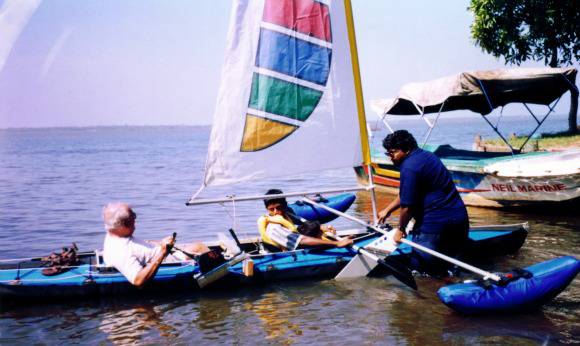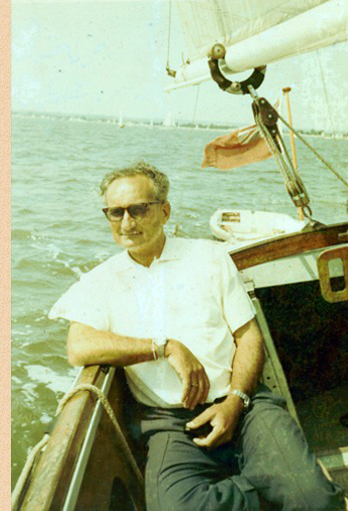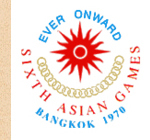Ray Wijewardene: The Sportsman

Adapted from a tribute written by Rohan Pethiyagoda in the year 2000
Born in 1924 and a member of the Ceylon Motor Yacht Club (CMYC) since 1950, Ray — “Uncle Ray” to my generation has been my personal hero ever since he taught me to sail in the late 1960s. Ray was the stuff of which teenage dreams are made, or at any rate, ought to be.
Even back then, although he was Director of Air Ceylon and therefore an ‘important person’, he had all the time in the world to come by my house on his Lambretta scooter or in his Austin Cambridge station wagon (I still remember the number: 5 Sri 505) and pick me up to go sail at the Royal Colombo Yacht Club, at the time located in Colombo harbour. Now at 80, he finds just as much time to introduce students at Moratuwa University to rowing or making model airplanes.
Ray’s childhood must have seemed charmed. At his parents’ instigation, he revelled in acquiring the skills of a courier: horse riding, swimming, cross-country running, pistol shooting and fencing (with an epe — a foil that can both cut and puncture). His fencing partner in the war years had been G G Ponnambalam.
 Ray started sailing when he was a student at Cambridge shortly after World War II. There he sailed Firefly-class dinghies, among the first sailboats to be crafted from plywood. He also developed his interest in rowing. He had circa 1943 become the first Sri Lankan to win the sculling championship at the Colombo Rowing Club. He went on to captain his Cambridge College, Peterhouse, and scull for his university. There, together with flying, he also took up gliding (and latterly, hot-air ballooning)
Ray started sailing when he was a student at Cambridge shortly after World War II. There he sailed Firefly-class dinghies, among the first sailboats to be crafted from plywood. He also developed his interest in rowing. He had circa 1943 become the first Sri Lankan to win the sculling championship at the Colombo Rowing Club. He went on to captain his Cambridge College, Peterhouse, and scull for his university. There, together with flying, he also took up gliding (and latterly, hot-air ballooning)
 One wonders whether he devoted any time at all to study while at Cambridge, for he was at the same time engaged in rebuilding from scrap a tandem-seated Tiger Moth biplane, the first of many fixed- and rotating-wing aircraft he was to build, fly and on occasion, crash.
One wonders whether he devoted any time at all to study while at Cambridge, for he was at the same time engaged in rebuilding from scrap a tandem-seated Tiger Moth biplane, the first of many fixed- and rotating-wing aircraft he was to build, fly and on occasion, crash.
In 1951, upon return to Colombo, he was put up for membership of CMYC by Sir John Kotelawala, later to be prime minister of Sri Lanka. Sir John’s motor launch Mistinguet had been at the time moored in Shed No 1. A Sunday afternoon chug on the lake was, says Ray, at the time “a stately business”, replete with uniformed boat-boys and stewards serving cold cucumber sandwiches on board.
He was also invited to become the first Sri Lankan member of the Royal Colombo Yacht Club, where he found the British to be even more class-conscious amongst themselves than they were vis-a-vis Sri Lankans, going so far as to blackball wealthy Englishmen aspiring to be members if they were connected with trade or other occupations that were at the time considered infra dignitatem.
 That Ray is a jack of many trades and a master of them all is borne out by his excelling at sailing, winning a Silver at the 1970 Asian Games. Not content with his own success, he invested much of his time in training a younger generation of sailors, including Lalin Jirasinha, who was to win a Bronze in the 1998 Asia Games.
That Ray is a jack of many trades and a master of them all is borne out by his excelling at sailing, winning a Silver at the 1970 Asian Games. Not content with his own success, he invested much of his time in training a younger generation of sailors, including Lalin Jirasinha, who was to win a Bronze in the 1998 Asia Games.
 |
Rohan Pethiyagoda, a biomedical engineer by training, is waging a personal crusade to save the remainder of his nation’s rich natural heritage through a programme of education, publishing and the recovery of blighted land. To accomplish this, he founded the Wildlife Heritage Trust of Sri Lanka. |
Read full tribute on CMYC website
National Olympic Committee of Sri Lanka statement on Ray’s death

